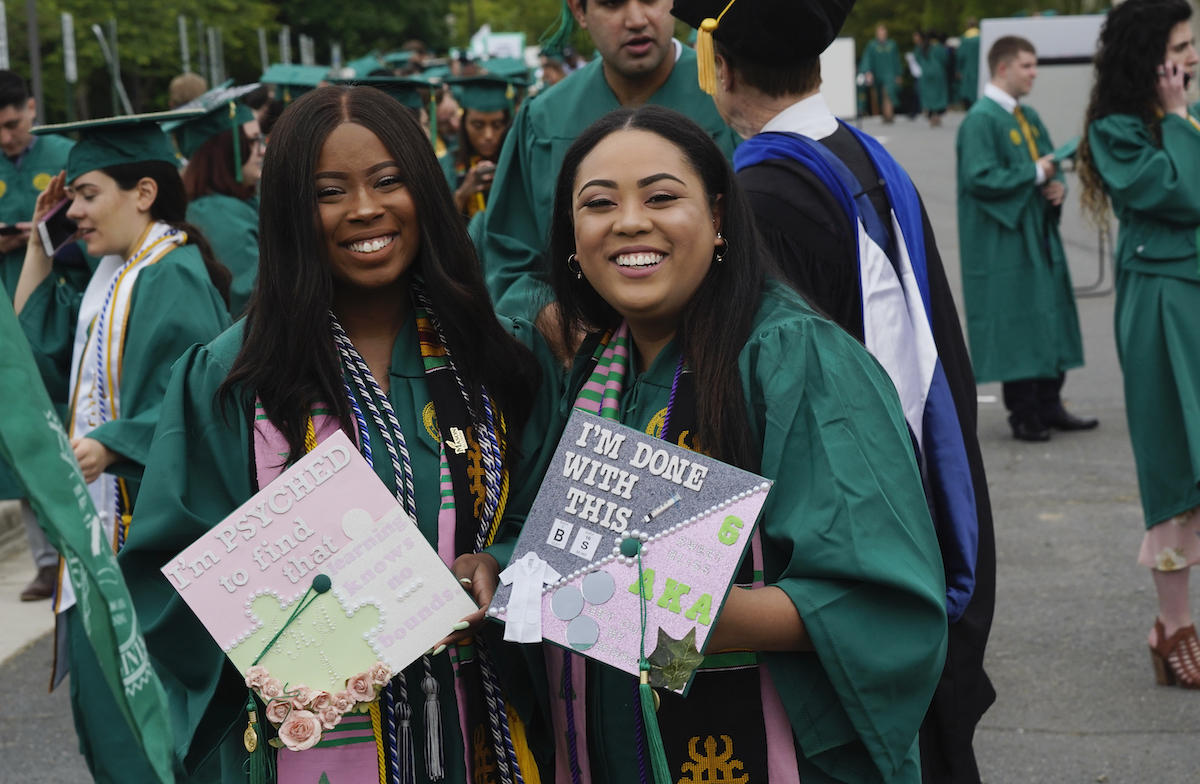George Mason University was highlighted as a national leader in Black student enrollment and graduation in a recent report from Eduventures Research.
The report, “Transcending the Current Higher Education Journey for Black Students: Colleges that Buck the Trend,” notes that from 2010 to 2019, overall undergraduate enrollment dropped 9%, but enrollment of Black undergraduates declined by 20%.
In comparison, Mason’s Black first-time undergraduate enrollment increased 73% during this period, placing Mason fourth nationally behind Towson University, SUNY-Cortland and SUNY-Albany.
Eduventures, a research and advisory firm focused exclusively on higher education, is part of the America College Test/National Research Center for College and University Admissions (ACT/NRCCUA).
The report classifies 50 schools as leaders among 191 non-Historically Black Colleges and Universities (HBCUs) with Black graduation rates equal to or above the national average. Ten are singled out by name for exceeding some or all of these four metrics when it comes to Black students: sustained growth in enrollment, steady gains in graduation rate, a graduation rate above the institutional average over the period, and/or a first-time undergraduate ratio above the national average.
The authors note that none of the top 10 met all four of these goals, but add that “all 10 schools show strong [quantitative] evidence of serving Black undergraduates much more assiduously than average.”
As the report notes, in 2019, the six-year graduation rate for all first-time, full-time undergraduates was 60%; for Black students, it was 40%. At Mason the Black graduation rate trend from 2011 to 2019 was 61 to 74%.
Mason’s Black graduation rate matched or surpassed the institutional average for seven years during the 2011 to 2019 survey period, behind the University of South Florida and SUNY-Stony Brook and tying with SUNY-Albany and Washington University in St. Louis.
The authors noted that although the 10 highlighted schools may not be role models in a traditional or narrow view, “they are role models in that each has managed something very few other schools, of any type, have achieved: to graduate traditional-aged Black undergraduates at a rate far above the national average and close this population’s graduation gap that is the norm at most peers.”

